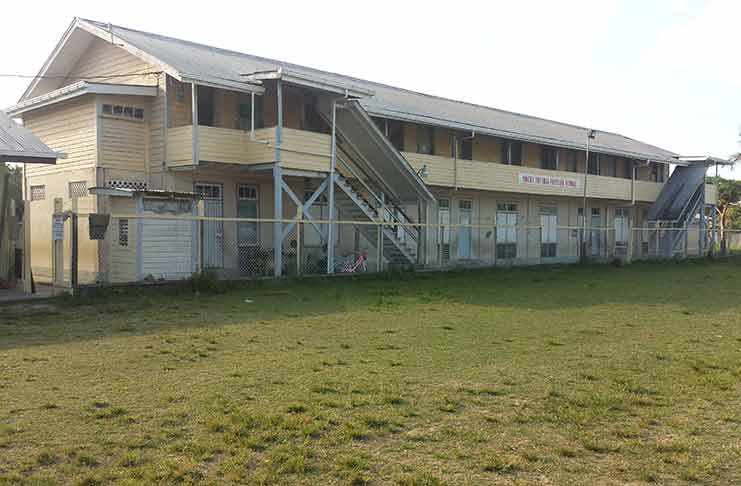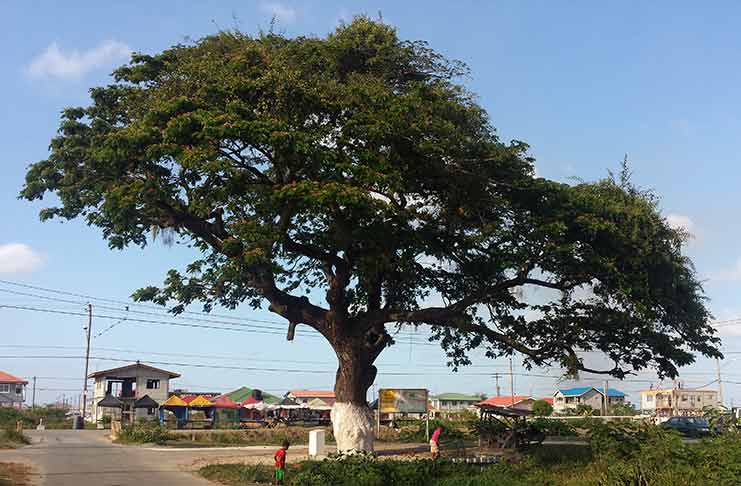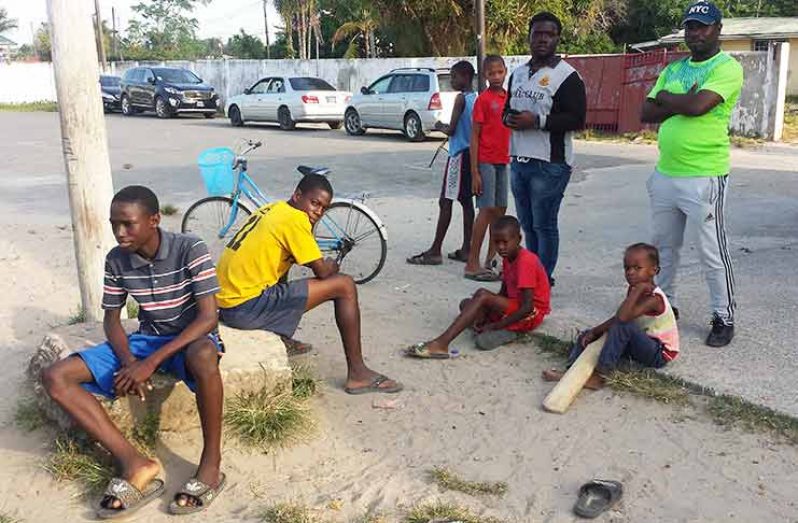IT WAS with a sense of deep pride and nostalgia that residents of Mocha/Arcadia relived some of the bitter-sweet, but nonetheless treasured memories of living in that village with all its challenges and excitement – way back into the 1950s.
Sharing with the Pepperpot Magazine last Sunday, were veterans, including Mrs. Elsa Wilson, a celebrated member of the Mocha Methodist Church, who’s been residing in the community since the early ‘50s. In those days, there were just a few houses and, in addition to a few private cars, the main source of transportation from Georgetown into the village and back was the Motor Transport’s fleet of huge wooden buses.

Painted bright blue, the buses were parked outside the Central Fire Department, Stabroek, from whence they moved off to various destinations, including Mocha/Arcadia.
8 cents a ride
Incredibly, the fare for a ride from Georgetown to Mocha/Arcadia or either way, was a paltry 8 cents, very often tendered in four copper penny coins and paid over to the conductor on entering the bus.
In the early 50s and 60s, Mrs. Wilson recalled, there was no government school in Mocha. There was one Primary School – the Mocha Methodist School which initially was housed in the Methodist Church on Nelson Street under a strict tutelage of the most feared Headmaster in their time – Mr. Norman Roberts.
It was not until the post- Independence period that a Government Primary School was established in Mocha, and the majority of the students of secondary school age attended the Providence Primary School opposite the Providence Police on the East Bank Demerara.

Even though the bus fare to school might have seemed negligible, in reality, it added up to a lot for parents whose children travelled to and from the primary school during the school term. For this reason, the bulk of the secondary school students travelling to Providence Primary School would walk to school in groups, leaving home very early in the morning and trekking two and a quarter miles to school. They dared not get there late, for fear of facing the wrath of disciplinarian headmaster, Mr. Bertie Russel.
Meanwhile, for persons new to the area and in search of addresses unfamiliar to them, the best landmark by which to be guided is the towering ‘Silk Cotton’ or ‘Coomaka’ tree which stands majestically at the head of Nelson Street. A few metres away and down the right side of the road, there is the oldest church in the neighbourhood –the Mocha Methodist Church, standing on the right-hand side.
The Coomaka Tree
The Coomaka Tree, down through the years in Guyana has had a history which warns people to desist from cutting or trimming it. As the tale goes, any person violating this order, will either die and become very sick. However, residents of Mocha assured that no such thing has ever happened in their history. Further, they said that every year they climb and trim the tree then stream fairy lights at Christmas time and at Emancipation time as well. “Well for all the years this tree has been here and we cleaning it, nobody has ever died or taken sick,” one bold young man declared. In fact, the tree has always provided shade for persons waiting at the head of Nelson Street to join the buses going out to Georgetown in the mid-50s and early 60s.
I would not give up Mocha for anything.
Mrs. Wilson, who’s seen many moons, since living in Mocha in the early 50s, relishes the very thought of living in that community – now developed beyond measure. Asked how does she feel about living in Mocha Arcadia, she passionately declared: “I have lived there practically all my life and believe you me, I would not give up Mocha for anything. I have been to the United States, travelled to other destinations, but Mocha will always be my first love ….There were more good times than bad and those of us who have endured are now reaping the benefits of our labour, and so to God be the glory.”
From the days of a few quaint wooden houses the village, with the birth of Independence in Guyana and beyond, Mocha/Arcadia now boasts a plethora of colourful and elegantly designed housing architecture; a well-equipped government Primary School ; Churches including the Arcadia Seventh Day Adventist and Mocha Methodist ; a Police Station; a Community Health Centre; 24-hour water and electricity supply services; street lights; multiple shops offering for sale – a variety of goods and services ; several carefully laid out streets; internet café; and all modern conveniences.
Additionally, Mocha/Arcadia over the last few years has developed into a burgeoning housing development scheme, with more in the pipeline for persons with a desire to pursue agriculture. Government has been pumping more monies into drainage and irrigation and additionally, more land has been open up to persons desirous of owning their own homes.
The contribution residents made to self-initiatives which would boost development in the Mocha- Arcadia Community is phenomenal and demonstrates what can be achieved when villagers work together, pooling what resources they have at their disposal – be it money; tools, technical advice or labour is worthy of mention.
Burnham Boulevard
Meanwhile, the residents are deeply appreciative of the contribution made to the community of Mocha/Arcadia by Professor Kensford (Ken) Danns at whose initiative and expense an all-weather road was built. That street, “The Burnham Boulevard”, links Nelson Street with the rear end of Arcadia. The residents who are all very appreciative of the undertaking, consider it a very humanitarian and insightful gesture which entailed the cutting of bushes and building a road, effectively cutting out more than one mile of walking by track to get from Mocha to Arcadia.
And reflecting on some of the good times, growing up in Mocha/Arcadia, Wilson spoke of the camaraderie existing among residents; about neighbours ‘being there’ for each other; having fun times together such as attending ice-cream banquet; ‘bring and buy’ sale; pound sale’ , penny concerts; cricket and other ball games. Such were the social activities young people were allowed to attend and partake in, even down through the 60s, as parents instilled in their children, strong moral values.
In fact, the elders recalled they were living in an environment where ‘”It took a village to bring up a child” so that it was allowed for an adult neighbour to upbraid or even spank any young person seen or heard behaving ’out of order’ whilst outside of their homes. “I lived in an age where going to Church was a must, and likewise morning devotion was a must, so that was how we also brought up our children.
Meanwhile, residents recalled the Pre-Independence period of the 50s, before the Guyana Water Inc. even came into being. Ironically this interview was done in the midst of the observance of ’World Water Day 2019’ and so Mrs. Wilson recounted vividly what the times were like when housewives laboured to secure water for use in their homes.
A labour of love
The residents recalled that for years leading up to Independence, Nelson Street (the longest and most populated Street in Mocha) had but one standpipe which serviced the needs of the residents out there. During the rainy season, rainwater was secured for cooking and drinking purposes. But largely, the residents contend, it was a labour of love, so they did it without complaining.
Meanwhile, other innovative means had to be employed for women to acquire water to do laundering and other household chores. Mrs. Elsa Wilsons recalled that women of the village would join a boat in the Mocha Canal and travel all the way to ‘Pepper Hill’ Watch House, a short distance away from Farm on the East Bank Demerara, then on to the aqueduct at Sage Pond. There they would collect clean fresh water and fetch it all the way back home, driving down the Mocha Canal by boat.
Today, Mocha- Arcadia now has potable water supplied by the Guyana Water Inc. and accessible round the clock. There is no more sharing of a public standpipe which was referred to by villagers as ‘the well’. In retrospect, they refer to it as a ‘labour of love’.




.png)









